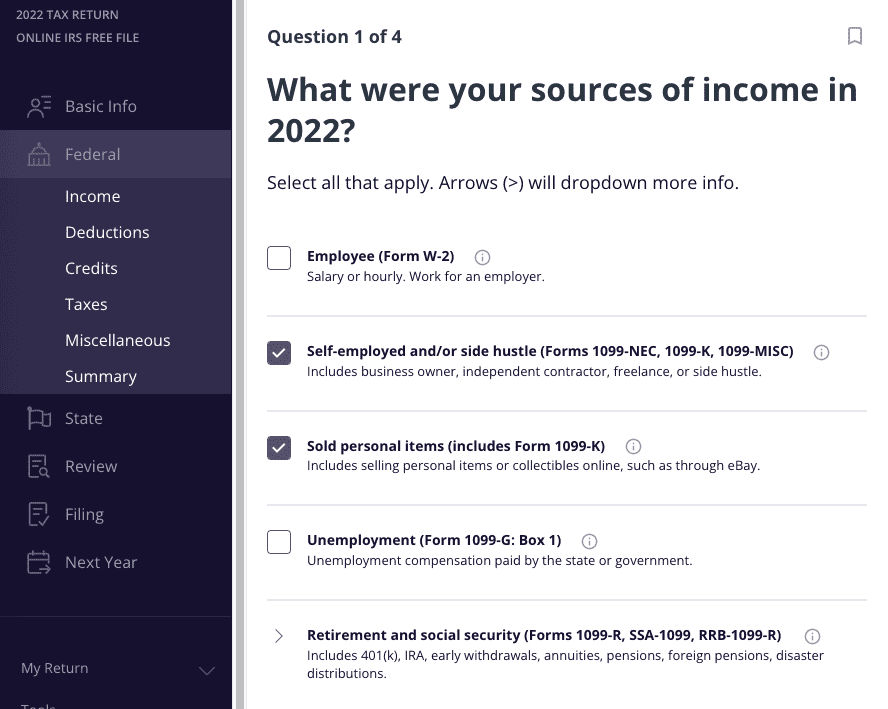Why Did I Receive a 1099-K?
Due to changes in what companies are required to report to the IRS this tax year, more taxpayers will receive Form 1099-K than in previous years. For some, the arrival of this unexpected tax form may be confusing and stressful — but don’t panic. We’re here to help you report this correctly on your income tax return.

What is Form 1099-K?
Form 1099-K records transactions from credit cards and third-party payment networks like PayPal, Venmo, or Square. Once you hit a certain threshold in payments received from these platforms, the third-party app is required to send you a 1099-K. They will also send copies of this 1099-K to the IRS and the state.
Why did I receive a 1099-K?
If you received a 1099-K this year, it means you had at least $600 in payment transactions through one of these third-party apps. This means you could receive more than one 1099-K — for example, if you hit the $600 threshold on both Venmo and Cash App, you’d receive a 1099-K from both companies.
This $600 threshold is new for tax year 2022. Previously, you had to have made at least 200 transactions totaling at least $20,000 to receive a 1099-K. So, it’s a big change!
Does a 1099-K mean I owe money to the IRS?
Not necessarily. A 1099-K doesn’t differentiate between business transactions and personal transactions — it’s simply an informational document showing all the transactions made to you via the payment app. That means it’s up to you to decide whether those transactions were taxable.
You only owe taxes on the net profits you made. Here are some examples of taxable transactions:
- You sold a personal item or collectible for more than you originally paid for it, and you collected your payment through Venmo.
- You sold goods at a farmer’s market as a side hustle and collected customer payments through an app such as Square.
- You rented out a room in your house and collect payments and fees from renters through a third-party payment app like PayPal.
- You crochet as a hobby and occasionally sell items you’ve made online through a site like eBay or Etsy.
You do not owe taxes on personal transactions or items sold at a loss. Here are some examples of non-taxable transactions that you would not need to report:
- You sold a personal item for less than you originally paid for it. For example, you sold your couch on Facebook Marketplace for $250, but you originally paid $600 for the couch several years ago.
- You were reimbursed by your roommates via an app like Venmo.
- You received any other personal transactions from friends or family through a third-party payment app.
Don’t worry if this sounds confusing. TaxAct® will help you differentiate between taxable and nontaxable payments by asking you questions about what you sold.
How do I submit a 1099-K?
If you choose to e-file with TaxAct, we’ll ask you for more information about the transactions on your Form 1099-K. Knowing what the payments were for helps us determine whether you owe taxes on that income.

First, we’ll ask you if you received any 1099-K income for self-employment or side hustle work, selling personal items, rentals, farming, or other activities not for profit. From there, depending on your answers, we’ll walk you through how to correctly report that income and fill out the necessary tax forms for you.
We’ll also let you know if your answers indicate that only some (or none) of the transactions on your 1099-K were taxable. If that’s the case, you won’t need to report that income.
After that, you’re done submitting your Form 1099-K!
Main takeaways
If you receive an unexpected Form 1099-K this year, it’s essential to know what it’s for and how to use it. Filing with TaxAct makes the process simple — we’ll guide you through it step by step so you can file quickly and confidently.
All TaxAct offers, products and services are subject to applicable terms and conditions.
The post Why Did I Receive a 1099-K? appeared first on TaxAct Blog.
from TaxAct Blog https://ift.tt/xCZJHg9
via CFO Blog
Comments
Post a Comment